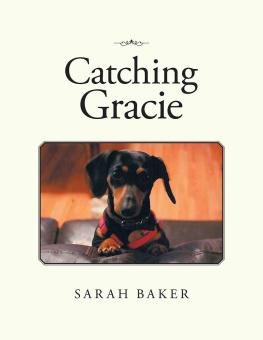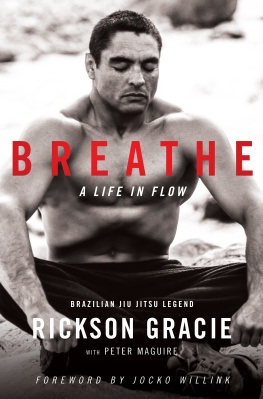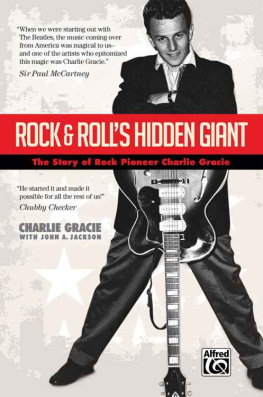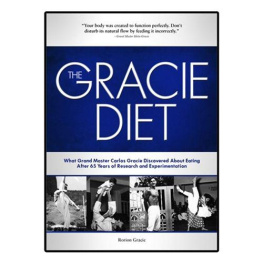Renzo Gracie - Mastering Jiujitsu
Here you can read online Renzo Gracie - Mastering Jiujitsu full text of the book (entire story) in english for free. Download pdf and epub, get meaning, cover and reviews about this ebook. year: 2023, genre: Romance novel. Description of the work, (preface) as well as reviews are available. Best literature library LitArk.com created for fans of good reading and offers a wide selection of genres:
Romance novel
Science fiction
Adventure
Detective
Science
History
Home and family
Prose
Art
Politics
Computer
Non-fiction
Religion
Business
Children
Humor
Choose a favorite category and find really read worthwhile books. Enjoy immersion in the world of imagination, feel the emotions of the characters or learn something new for yourself, make an fascinating discovery.

- Book:Mastering Jiujitsu
- Author:
- Genre:
- Year:2023
- Rating:3 / 5
- Favourites:Add to favourites
- Your mark:
- 60
- 1
- 2
- 3
- 4
- 5
Mastering Jiujitsu: summary, description and annotation
We offer to read an annotation, description, summary or preface (depends on what the author of the book "Mastering Jiujitsu" wrote himself). If you haven't found the necessary information about the book — write in the comments, we will try to find it.
Mastering Jiujitsu — read online for free the complete book (whole text) full work
Below is the text of the book, divided by pages. System saving the place of the last page read, allows you to conveniently read the book "Mastering Jiujitsu" online for free, without having to search again every time where you left off. Put a bookmark, and you can go to the page where you finished reading at any time.
Font size:
Interval:
Bookmark:
MASTERING
JUJITSU
Renzo Gracie
John Danaher
Human Kinetics
Library of Congress Cataloging-in-Publication Data Gracie, Renzo.
Mastering jujitsu / Renzo Gracie, John Danaher.
p. cm.
Includes index.
ISBN 0-7360-4404-3 (softcover)
1. Jiu-jitsu.
2. Jiu-jitsuHistory.
I. Danaher, John, 1967
II. Title.
GV1114.G74
2003
796.815dc21
2003000540
ISBN-10: 0-7360-4404-3 (print)
ISBN-13: 978-0-7360-4404-# (print)
ISBN-10: 0-7360-8505-X (Adobe PDF)
ISBN-13: 978-0-7360-8505-2 (Adobe PDF)
Copyright 2003 by Renzo Gracie and John Danaher All rights reserved. Except for use in a review, the reproduction or utilization of this work in any form or by any electronic, mechanical, or other means, now known or hereafter invented, including xerography, photocopying, and recording, and in any information storage and retrieval system, is forbidden without the written permission of the publisher.
Acquisitions Editor: Ed McNeely; Developmental Editor: Leigh LaHood; Assistant Editor: Kim Thoren; Copyeditor: Scott Jerard; Proofreader: Pam Johnson; Indexer: Betty Frizzll; Graphic Designer: Robert Reuther; Graphic Artist: Sandra Meier; Photo Manager: Dan Wendt; Cover Designer: Kristin Darling; Photographer (cover): Susumu Nagao; Photographer (interior): Tom Roberts; Printer: Versa Press
Human Kinetics books are available at special discounts for bulk purchase. Special editions or book excerpts can also be created to specification. For details, contact the Special Sales Manager at Human Kinetics.
Printed in the United States of America
Human Kinetics
Web site: www.HumanKinetics.com
United States: Human Kinetics
P.O. Box 5076
Champaign, IL 61825-5076
800-747-4457
e-mail: humank@hkusa.com
Canada: Human Kinetics
475 Devonshire Road Unit 100
Windsor, ON N8Y 2L5
800-465-7301 (in Canada only)
e-mail: info@hkcanada.com
Europe: Human Kinetics
107 Bradford Road
Stanningley
Leeds LS28 6AT, United Kingdom
+44 (0) 113 255 5665
e-mail: hk@hkeurope.com
Australia: Human Kinetics
57A Price Avenue
Lower Mitcham, South Australia 5062
08 8277 0999
e-mail: info@hkaustralia.com
New Zealand: Human Kinetics
Division of Sports Distributors NZ Ltd.
P.O. Box 300 226 Albany
North Shore City
Auckland
0064 9 448 1207
e-mail: info@humankinetics.co.nz
CONTENTS
iii
This page intentionally left blank
FOREWORD
The explosion of interest in jujitsu around the world has been extremely gratifying to my family. Most martial artists are now familiar with some of the core precepts of my familys philosophy of combatthat the outcome of almost all fights is largely determined by grappling, especially on the ground. What is needed now is a deeper look at the theory and strategy of grappling-based approaches to jujitsu that can take students to a higher level of understanding.
Rather than stopping at the level of glib generalizations such as all fights go the ground, my nephew Renzo and his friend and student, John Danaher, make a concerted analysis of all aspects of combat. Their intention is to show how different combat skills can be used to take an opponent out of his area of expertise and thus render him more vulnerable to attack.
As one of Renzos main teachers, I find it wonderful to have observed his development into one of the foremost members of our family. Still more interesting is observing the development of his own personal approach to combat, based upon his own experiences as a professional fighter. Now martial artists around the world can look into that thoroughly modern approach. It is my pleasure to commend this bookan expression of modern jujitsuto the public and martial arts world.
Carlos Gracie, Jr.
v
This page intentionally left blank
PREFACE
Almost every culture and society on earth has a martial tradition, a style and approach to fighting that emerged within that culture and came to be associated with it. The result is that a vast number of martial arts exist, each teaching a unique means of achieving victory over a potential adversary. A long-standing question among martial artists has always beenwhich of the many styles is best? In other words, which is the most efficient fighting style?
Regardless of the difficulties in furnishing an answer to this perennial question, a massive step forward was taken in the 1990s when mixed martial arts (MMA) events were staged across North America. In these events, different martial arts were matched up against one another with few rules. To the great surprise of many, the hallowed theories of many martial arts were repudiated by hard experience. The public expected the biggest, strongest, hardest-punching-and-kicking man to win. In fact, the consistent winners of these tournaments were almost always men who were simply well-versed in grappling styles of martial artsparticularly certain forms of jujitsu. Rather than smashing their way to victory with pugilistic skills and power, these grapplers, despite being outweighed in almost every fight, wrapped up their opponents in a tight clinch, then took the fight to the ground. Here, their opponents had little idea of how to conduct themselves, and their striking skill was strongly negated. Once on the ground, the grapplers had little difficulty in applying efficient submission holdsjoint locks and chokesthat forced their hapless opponents into a bloodless surrender.
The tremendous and unexpected success of these jujitsu fighters in early MMA events invoked a massive surge of interest toward jujitsu. People quickly came to realize that the techniques and training philosophy of jujitsu were essential to success in real combat and that the grappling skill that lies at the heart of jujitsus dominance in MMA events had been neglected by the martial arts community for decades. People from all fighting styles had to sit up and take notice of what quickly came to be known as the grappling revolution. Although public demand for instruction in jujitsu rose to unprecedented levels, there was, strangely enough, almost no reflection of this in printed form. Dozens of jujitsu videos were produced, and jujitsu seminars were routinely sold out; however, books on the radical changes in jujitsu and the martial arts have yet not emerged.
This book is intended to satisfy the enormous demand for quality, written jujitsu instruction. Unlike previous books on jujitsu, this book analyzes the recent changes in jujitsu and proposes new directions for this ancient martial art.
vii
PREFACE
Most martial artists have come to recognize the tremendous need for grappling skill in real combat. MMA events have consistently shown that grappling skill is probably the single most important indicator of success in fighting. The highly effective grappling techniques of jujitsu (combat-proven in MMA events) are presented clearly and fully outlined to the reader by one of the most important figures in modern jujitsu and MMA competition, Renzo Gracie, and his student John Danaher.
Every martial artist is affected by the current shift toward grappling skill.
Even stylists who largely reject grappling for self-defense purposes must learn the grappling techniques to defend themselves against grapplers. Those who do accept the validity of grappling technique for self-defense stand in need of a modern jujitsu book that details the key skills that lead to grappling mastery
and those who do not accept it should nevertheless consider the books content for the sake of defending themselves in the event of a grappling attack.
Next pageFont size:
Interval:
Bookmark:
Similar books «Mastering Jiujitsu»
Look at similar books to Mastering Jiujitsu. We have selected literature similar in name and meaning in the hope of providing readers with more options to find new, interesting, not yet read works.
Discussion, reviews of the book Mastering Jiujitsu and just readers' own opinions. Leave your comments, write what you think about the work, its meaning or the main characters. Specify what exactly you liked and what you didn't like, and why you think so.







